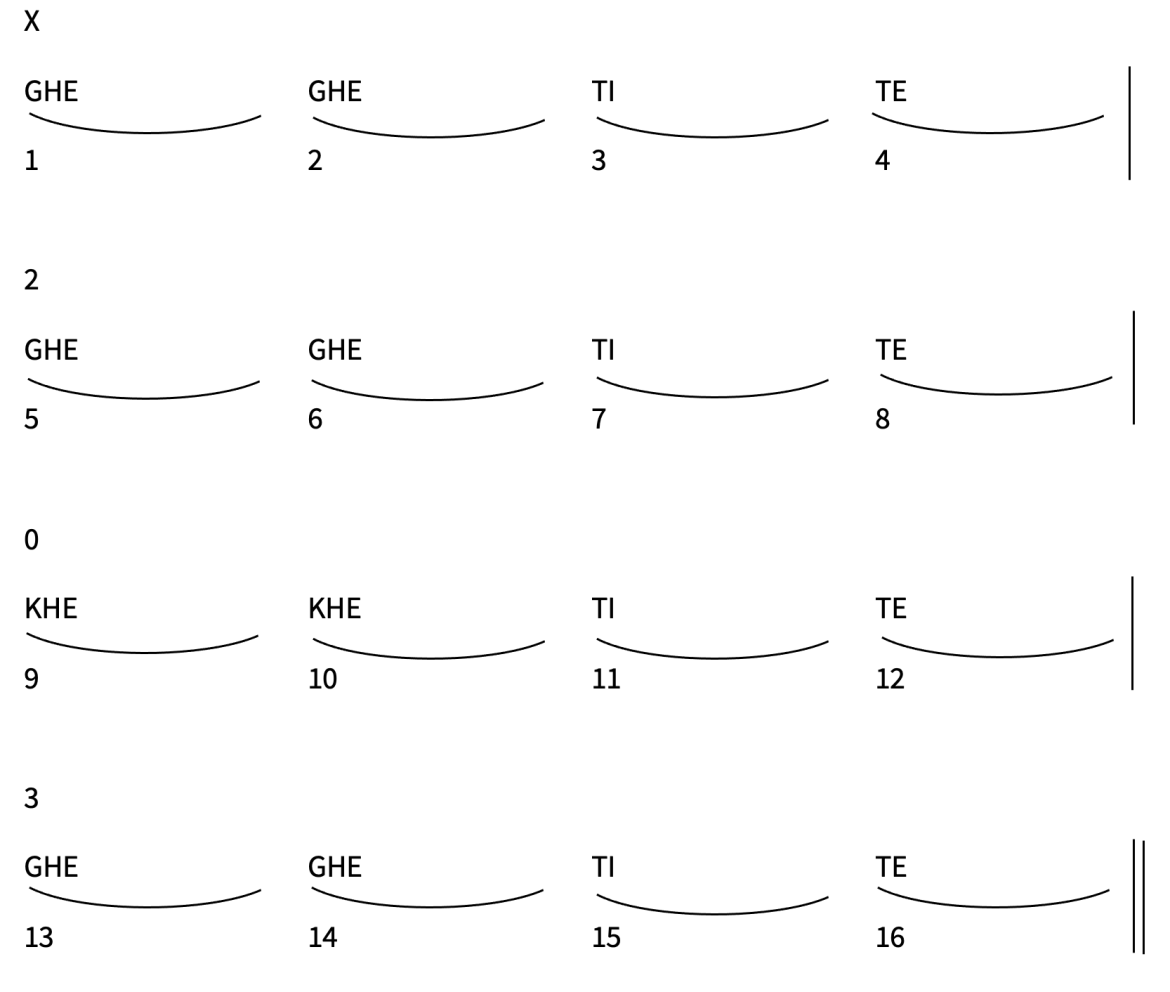Hand placement, coordination and tonal quality (with exercises)
- Have an awareness of the range of sounds made on the Tabla, including the pitch of the two drums
- Develop some control of the position where the hands strike the Tabla, recognising the effect that it will have on the quality of sound
- Play a selection of phrase bols (syllables) which include closed bols using both hands: KHE and TITE
- Produce a clean tone (no resonance) at a regular pulse on both drums
- Develop a controlled sound at two or more dynamic levels on both drums
- Develop an understanding of accents, dynamics, pitch and timbre within the repertoire played
- Begin to play the open bol NA
- Play at a consistent tempo whilst ensuring that hands are kept close to the Tabla
Introduce the parts of the Tabla. Demonstrate the pitch of each drum and how the position in which the hands strike the instrument changes the sound. Encourage them to experiment.
Demonstrate the correct arm and hand positioning for learners.
Encourage learners to play using an appropriate hand position. Ensure that wrists, arms, and shoulders remain relaxed at all times. Any signs of tension restricting hand movement should be addressed.
Learners must refrain from using excessive force when striking the Tabla.
Ask learners to observe the teachers’ hand stroke, using two or three fingers to play TI and the index finger to play TE.
The bol TI is made by the middle and ring fingers, but the little finger should be positioned close to the ring finger to avoid the buildup of tension.
Ask learners to play short, simple phrases using closed bols KHE on large drum (baya) and TITE on small drum (daya), with hands at 45 degrees, allowing the sound to be made by the weight of the arms.
If appropriate, the bol of TIRE KITA may be introduced in this Programme of Study as a single 4-syllable phrase.
Introduce the bol NA.
NA is a more difficult sound to produce; some teachers may prefer to stick to closed sounds depending on the individual learners.
Develop stroke exercises in ekgun (single speed) dugun (double speed) which enhance the use of both hands, developing hand coordination. For example, Exercise 1:

Discuss the different pitch and timbre created by each bol with learners.
Encourage learners to incorporate accents and dynamics into their playing.
Introduce accents on TITE.
Explore the progression of this Learning Objective
Continue exploring the current Programme of Study